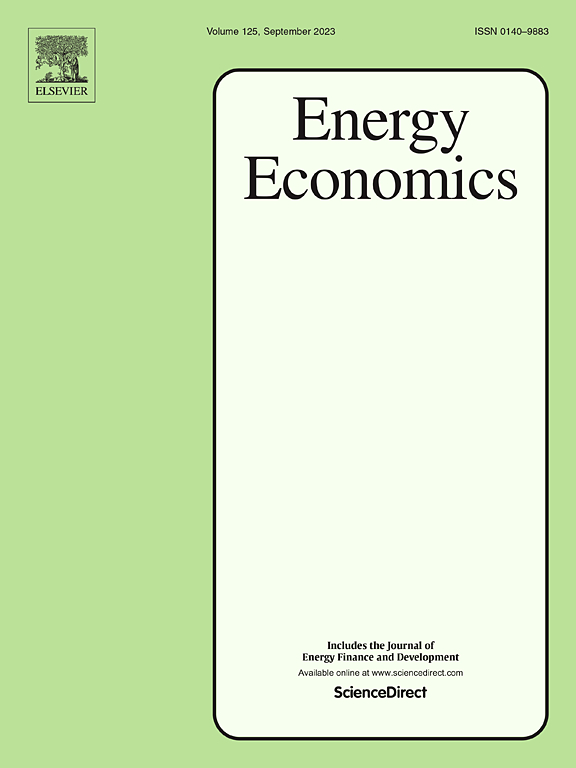能效信用指引能否推动企业低碳技术创新?来自中国的证据
IF 14.2
2区 经济学
Q1 ECONOMICS
引用次数: 0
摘要
本研究以中国《能效信用指引》为准自然实验,采用倾向得分匹配-差中差(PSM-DID)方法考察了基于激励的能效信用政策对企业低碳技术创新的影响。研究发现,eeg发挥了积极的激励作用,促进了企业低碳技术创新,并呈现出“量增质增”的趋势。机制分析表明,EECG主要通过促进企业间融资竞争、抑制企业金融化、吸引绿色投资者和增强企业气候风险意识来激励低碳技术创新。调节效应分析表明,气候政策不确定性对东亚经济共同体的政策有效性具有倒u型调节效应。异质性分析表明,节能信贷的创新激励效应在高管具有环境背景的企业、技术密集型企业和位于非正规金融发展水平较低地区的企业中更强。最后,EECG对低碳技术创新的推动进一步优化了企业的ESG(环境、社会和治理)绩效。本文章由计算机程序翻译,如有差异,请以英文原文为准。
Can energy efficiency credit guidelines boost enterprises' low-carbon technological innovation? Evidence from China
This research takes China's “Energy Efficiency Credit Guidelines (EECG)” as a quasi-natural experiment and uses the propensity score matching-difference-in-differences (PSM-DID) method to examine the impact of incentive-based energy efficiency credit policies on corporate low-carbon technological innovation. The research finds that the EECG have exerted a positive incentive effect, promoted corporate low-carbon technological innovation and showed a trend of “improving quantity and increasing quality.” Mechanism analysis shows that the EECG mainly incentivize low-carbon technological innovation by promoting financing competition among firms, inhibiting corporate financialization, attracting green investors, and strengthening firms' awareness of climate risks. Moderating effect analysis reveals that climate policy uncertainty has an inverted U-shaped moderating effect on the policy effectiveness of the EECG. Heterogeneity analysis indicates that the innovation incentive effect of energy efficiency credit is stronger in firms with executives having environmental backgrounds, technology-intensive firms, and firms located in regions with lower levels of informal financial development. Finally, the promotion of low-carbon technological innovation by the EECG further optimizes firms' ESG (environmental, social, and governance) performance.
求助全文
通过发布文献求助,成功后即可免费获取论文全文。
去求助
来源期刊

Energy Economics
ECONOMICS-
CiteScore
18.60
自引率
12.50%
发文量
524
期刊介绍:
Energy Economics is a field journal that focuses on energy economics and energy finance. It covers various themes including the exploitation, conversion, and use of energy, markets for energy commodities and derivatives, regulation and taxation, forecasting, environment and climate, international trade, development, and monetary policy. The journal welcomes contributions that utilize diverse methods such as experiments, surveys, econometrics, decomposition, simulation models, equilibrium models, optimization models, and analytical models. It publishes a combination of papers employing different methods to explore a wide range of topics. The journal's replication policy encourages the submission of replication studies, wherein researchers reproduce and extend the key results of original studies while explaining any differences. Energy Economics is indexed and abstracted in several databases including Environmental Abstracts, Fuel and Energy Abstracts, Social Sciences Citation Index, GEOBASE, Social & Behavioral Sciences, Journal of Economic Literature, INSPEC, and more.
 求助内容:
求助内容: 应助结果提醒方式:
应助结果提醒方式:


